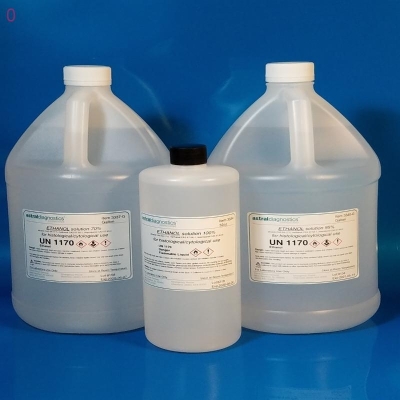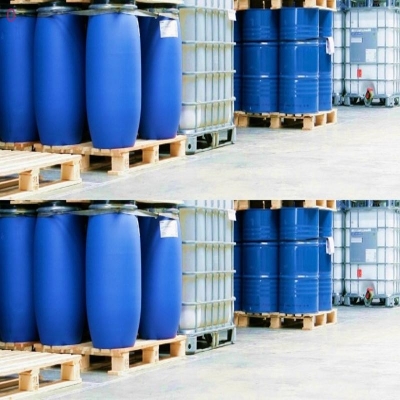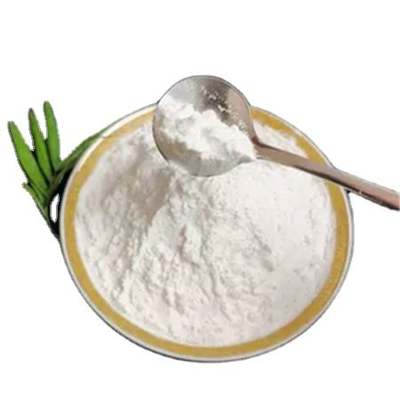-
Categories
-
Pharmaceutical Intermediates
-
Active Pharmaceutical Ingredients
-
Food Additives
- Industrial Coatings
- Agrochemicals
- Dyes and Pigments
- Surfactant
- Flavors and Fragrances
- Chemical Reagents
- Catalyst and Auxiliary
- Natural Products
- Inorganic Chemistry
-
Organic Chemistry
-
Biochemical Engineering
- Analytical Chemistry
- Cosmetic Ingredient
-
Pharmaceutical Intermediates
Promotion
ECHEMI Mall
Wholesale
Weekly Price
Exhibition
News
-
Trade Service
[ Focus on Chemical Machinery Equipment Network ]
Chemical machinery and equipment network hotspots pay attention to chemical machinery and equipmentThe domestic market is vast, and the four major families increase domestic production capacity
The domestic market is vast, and the four major families increase domestic production capacitySince 2015, the four major families have accelerated the expansion of domestic production: ABB invested 150 million US dollars to build a robot super factory in Shanghai, and plans to put it into operation at the end of 2021, with a maximum annual production capacity of 100,000 units
.
.
FANUC has invested 100 million yuan to build a production base and will achieve an annual production capacity of about 40,000 units by 2020.
In addition, it will invest 1.
58 billion yuan to build the world’s largest robot base "Super Smart Factory", which is expected to achieve a monthly production capacity of about 11,000 units by 2023.
.
In addition, it will invest 1.
58 billion yuan to build the world’s largest robot base "Super Smart Factory", which is expected to achieve a monthly production capacity of about 11,000 units by 2023.
.
Yaskawa and Changying Precision have established a joint venture company, which plans to achieve an annual production capacity of approximately 10,000 units by 2021
.
.
KUKA Shanghai’s second plant and Foshan plant have been gradually put into production.
As of 2020, the maximum annual production capacity of the two plants in Shanghai and Foshan will reach approximately 50,000 units.
In addition, KUKA has invested in the second phase of the Foshan project, which is expected to be completed in 2024.
The production capacity is 100,000 units
.
As of 2020, the maximum annual production capacity of the two plants in Shanghai and Foshan will reach approximately 50,000 units.
In addition, KUKA has invested in the second phase of the Foshan project, which is expected to be completed in 2024.
The production capacity is 100,000 units
.
Domestic suppliers accelerate production expansion and achieve high growth in production and sales
Domestic suppliers accelerate production expansion and achieve high growth in production and sales Since 2015, major domestic industrial robot suppliers have continued to accelerate their production expansion to cope with fierce competition with overseas companies
.
At present, Estun's annual production capacity of the first phase of the robot production line in the Jiulong Lake plant has reached 9,000 units.
In addition, the smart factory built by Estun invested 1 billion yuan is about to be completed, and the production capacity will be about 15,000 units after it is put into production
.
.
At present, Estun's annual production capacity of the first phase of the robot production line in the Jiulong Lake plant has reached 9,000 units.
In addition, the smart factory built by Estun invested 1 billion yuan is about to be completed, and the production capacity will be about 15,000 units after it is put into production
.
Eft actually produces about 2,000 robots of various types.
In addition, the company will raise funds to build the "Industrialization Project of Marked Welding Robot Workstations" in 2021.
After the production is completed, the company's annual production capacity will increase by about 5,000 welding robots; The plant can achieve an annual production capacity of 20,000 units and 500 sets of robotic flexible workstations when it is put into production.
The annual output value is expected to be 1.
5 billion yuan
.
In addition, the company will raise funds to build the "Industrialization Project of Marked Welding Robot Workstations" in 2021.
After the production is completed, the company's annual production capacity will increase by about 5,000 welding robots; The plant can achieve an annual production capacity of 20,000 units and 500 sets of robotic flexible workstations when it is put into production.
The annual output value is expected to be 1.
5 billion yuan
.
The actual production capacity of Topstar reaches 12,000 units.
It is estimated that the Jiangsu base will be completed and accepted and delivered to use at the end of September this year.
In addition, the company invested 3.
3 billion yuan to build the Dongguan Topstar intelligent equipment headquarters base for industrial robots, injection molding equipment, CNC equipment, etc.
The R&D and manufacturing of intelligent manufacturing equipment is expected to achieve an annual output value of approximately 7 billion yuan after reaching production capacity
.
It is estimated that the Jiangsu base will be completed and accepted and delivered to use at the end of September this year.
In addition, the company invested 3.
3 billion yuan to build the Dongguan Topstar intelligent equipment headquarters base for industrial robots, injection molding equipment, CNC equipment, etc.
The R&D and manufacturing of intelligent manufacturing equipment is expected to achieve an annual output value of approximately 7 billion yuan after reaching production capacity
.
As of 2020, major domestic suppliers have achieved an annual production capacity of approximately 40,000 units, and are expected to achieve an annual production capacity of over 250,000 units in 2025
.
.
The output of domestic industrial robots has increased year by year, and the sales volume has achieved volatility
.
From 2015 to 2020, the domestic production of industrial robots increased from 33,000 units in 2015 to 237,000 units in 2020, with a CAGR of 48.
3%; sales increased from 69,000 units in 2015 to approximately 170,000 units in 2020, with a CAGR of 19.
8 %
.
From 2015 to 2017, the domestic sales of industrial robots increased from 69,000 to 156,000, with a CAGR of 50.
4%, achieving rapid growth, mainly due to the intensive introduction of policy subsidies and the decline in the price of automation products, downstream automotive, 3C and other industrial automation markets Rapid growth
.
.
From 2015 to 2020, the domestic production of industrial robots increased from 33,000 units in 2015 to 237,000 units in 2020, with a CAGR of 48.
3%; sales increased from 69,000 units in 2015 to approximately 170,000 units in 2020, with a CAGR of 19.
8 %
.
From 2015 to 2017, the domestic sales of industrial robots increased from 69,000 to 156,000, with a CAGR of 50.
4%, achieving rapid growth, mainly due to the intensive introduction of policy subsidies and the decline in the price of automation products, downstream automotive, 3C and other industrial automation markets Rapid growth
.
From 2018 to 2019, the growth rate of domestic industrial robot sales relatively slowed down, reaching the lowest point of growth of -1.
4% in 2018, mainly due to the substantial reduction in policy subsidies and the impact of trade frictions, and downstream demand continued to be sluggish; since the second half of 2020, Benefiting from the recovery of the manufacturing industry and industrial upgrading, the boom of the domestic industrial robot industry continued to pick up, with annual production and sales of 237,000 and 170,000 units respectively, an increase of approximately 27% and 21% year-on-year respectively
.
4% in 2018, mainly due to the substantial reduction in policy subsidies and the impact of trade frictions, and downstream demand continued to be sluggish; since the second half of 2020, Benefiting from the recovery of the manufacturing industry and industrial upgrading, the boom of the domestic industrial robot industry continued to pick up, with annual production and sales of 237,000 and 170,000 units respectively, an increase of approximately 27% and 21% year-on-year respectively
.
Domestic substitution of industrial robots is accelerating, and the growth rate of leading companies is better than the industry average
Domestic substitution of industrial robots is accelerating, and the growth rate of leading companies is better than the industry average From 2011 to 2020, the domestic sales of industrial robots will increase from 23,000 units to about 170,000 units, with a CAGR of 25.
1%; the sales of domestic industrial robots will increase from about 800 units to about 50,000 units, with a CAGR of 58.
3%, which is higher than the overall domestic market.
The sales growth rate was about 33 percentage points; the market penetration rate increased from 3.
5% to 29% during the same period, an increase of 25.
5 percentage points
.
From 2016 to 2020, the sales volume of Estun industrial robots increased from about 1,000 to about 6,000, with a CAGR of 56.
5%.
The compound growth rate during the same period was about 41% higher than that of the industry, and the market penetration rate increased from about 1% to 4%.
An increase of about 3 percentage points
.
1%; the sales of domestic industrial robots will increase from about 800 units to about 50,000 units, with a CAGR of 58.
3%, which is higher than the overall domestic market.
The sales growth rate was about 33 percentage points; the market penetration rate increased from 3.
5% to 29% during the same period, an increase of 25.
5 percentage points
.
From 2016 to 2020, the sales volume of Estun industrial robots increased from about 1,000 to about 6,000, with a CAGR of 56.
5%.
The compound growth rate during the same period was about 41% higher than that of the industry, and the market penetration rate increased from about 1% to 4%.
An increase of about 3 percentage points
.
Original title: From the perspective of industrial robot capacity expansion, how domestic and foreign manufacturers are playing games







